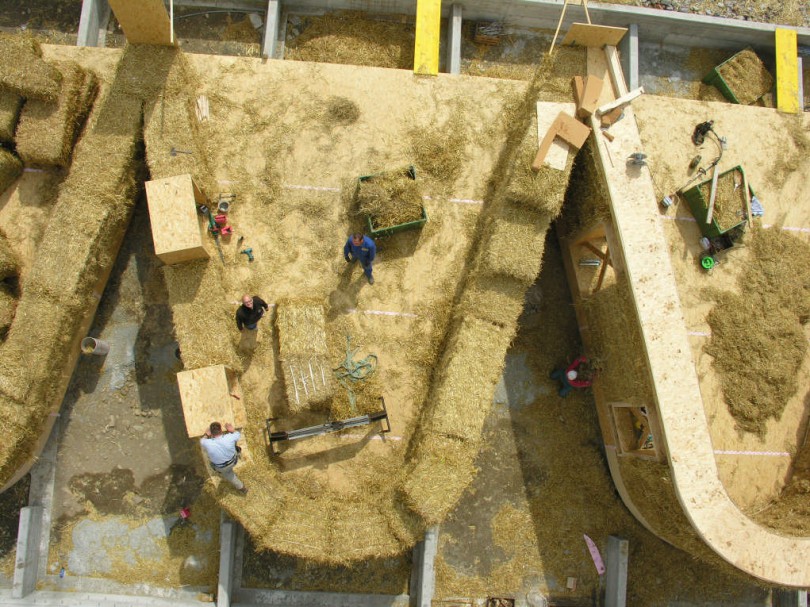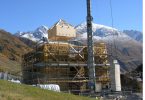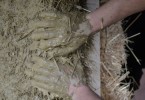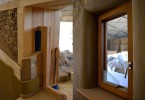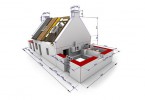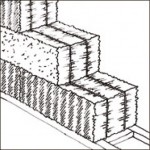
Knowledge
Trainees know …
- about loadbearing systems and its specific demands on planning [Level 4]
- advantages and disadvantages of loadbearing technique
- joints to attached building elements (floor and roof plates, openings) according to loadbearing best practice and rules
- tools and machines used in the straw bale construction sites.
- the possible dangers, safe working practices, accident prevention regulations and security data sheets.
- the specific straw bale problems of the building site organization.
- how to read and implement plans. [Level 4]
- the great importance of good density of the straw bales.
- how to adjust the bales to the required size and shape.
- different compression methods and its characteristics.
- the need to fix the bales and knows the different methods to do it.
- how to fill the gaps between the bales and how to prepare the interior and exterior surface for plastering.
- the timetable linked with the costs. [Level 4]
Skills
Trainees can …
- handle the tools and machines which are used in the straw bale construction.
- estimate the dangers linked with it and can avoid it.
- tune the available danger regulations with the other partners (planner, developers, self builders etc.) in a way that the building site is safe. [Level 4]
- apply the different Ioadbearing construction methods and can resize, compress and fix the bales.
- make a time table and organize the work routines. [Level 4]
- do basic carpentry skills to make additional wooden construction aids in order to erect straight walls.
Competence
Trainees can …
- agree with all partners in a way that the building site is safe.
- organizes the work on straw bale building site that uses the loadbearing construction method, and integrate with suitable work routines, tools and technologies.
- explain different ways of loadbearing with reference to advantages and disadvantages. [Level 4]
- inspect and select good quality bales for loadbearing construction. Trainee can control the general quality of the bales and realized constructions during the whole building process.
Materials/Documents:
U3 Learning Outcome – Level 3 | ECVET credit points: 25
U3 Learning Outcome – Level 4 | ECVET credit points: 20
U3 Session 1: Design and Planning 5 hours
U3 Session 2: Construction 2 days
U3 Session 3: Tools & Practices 1 day
Handbook U3:
STEP U3 Handbook ENGLISH
Links: U3 all sessions
